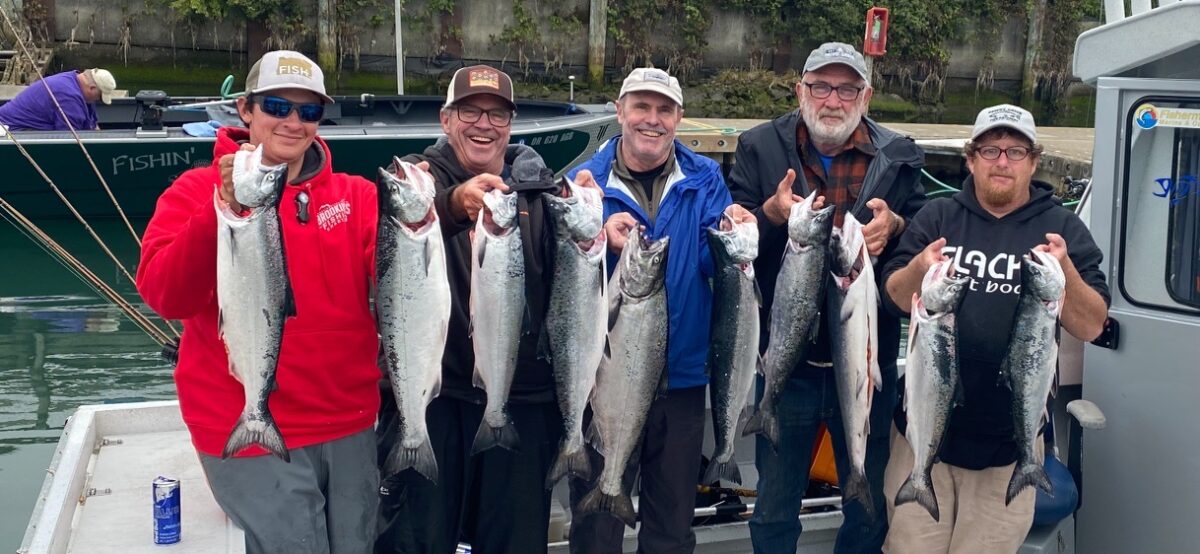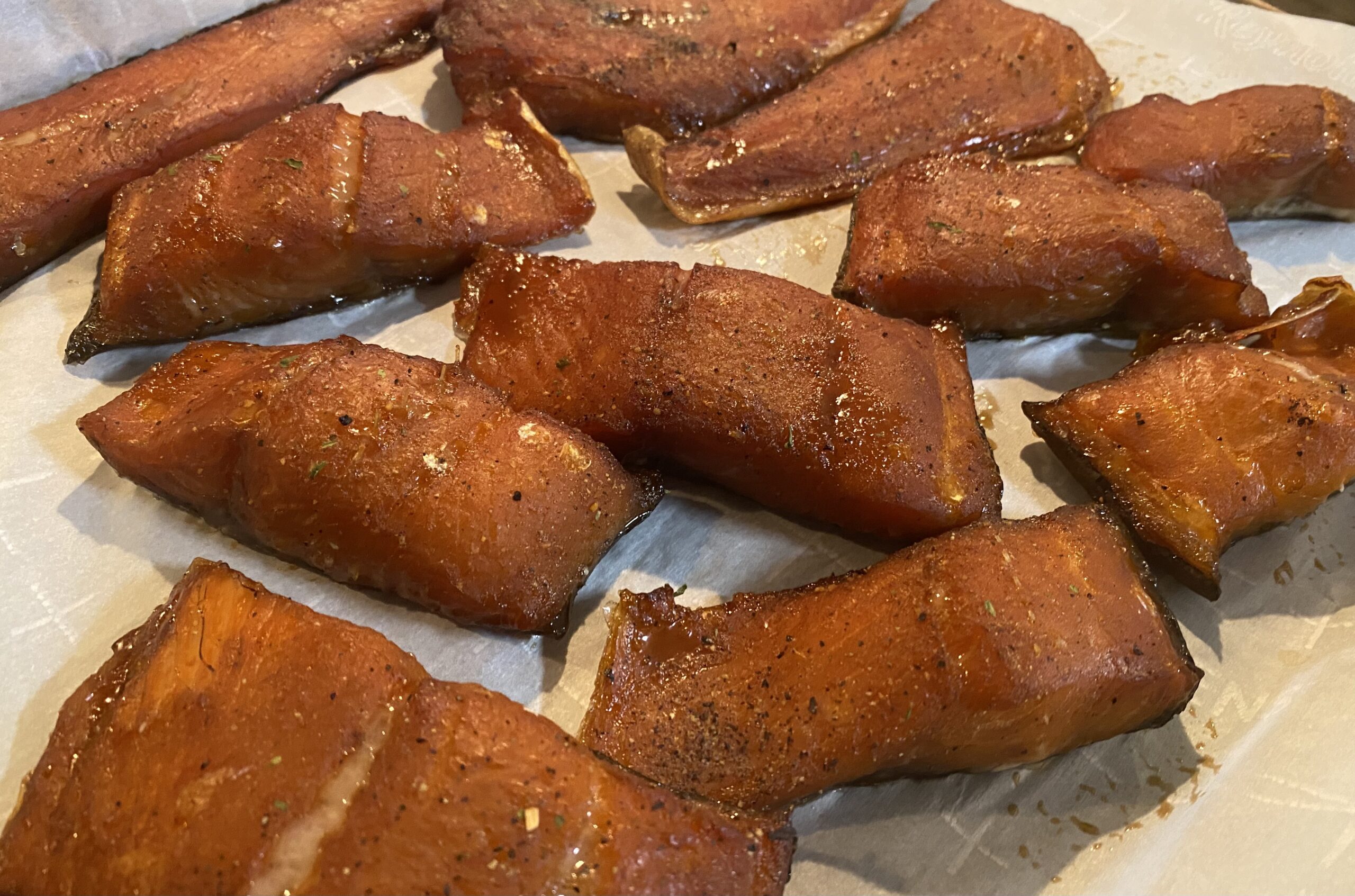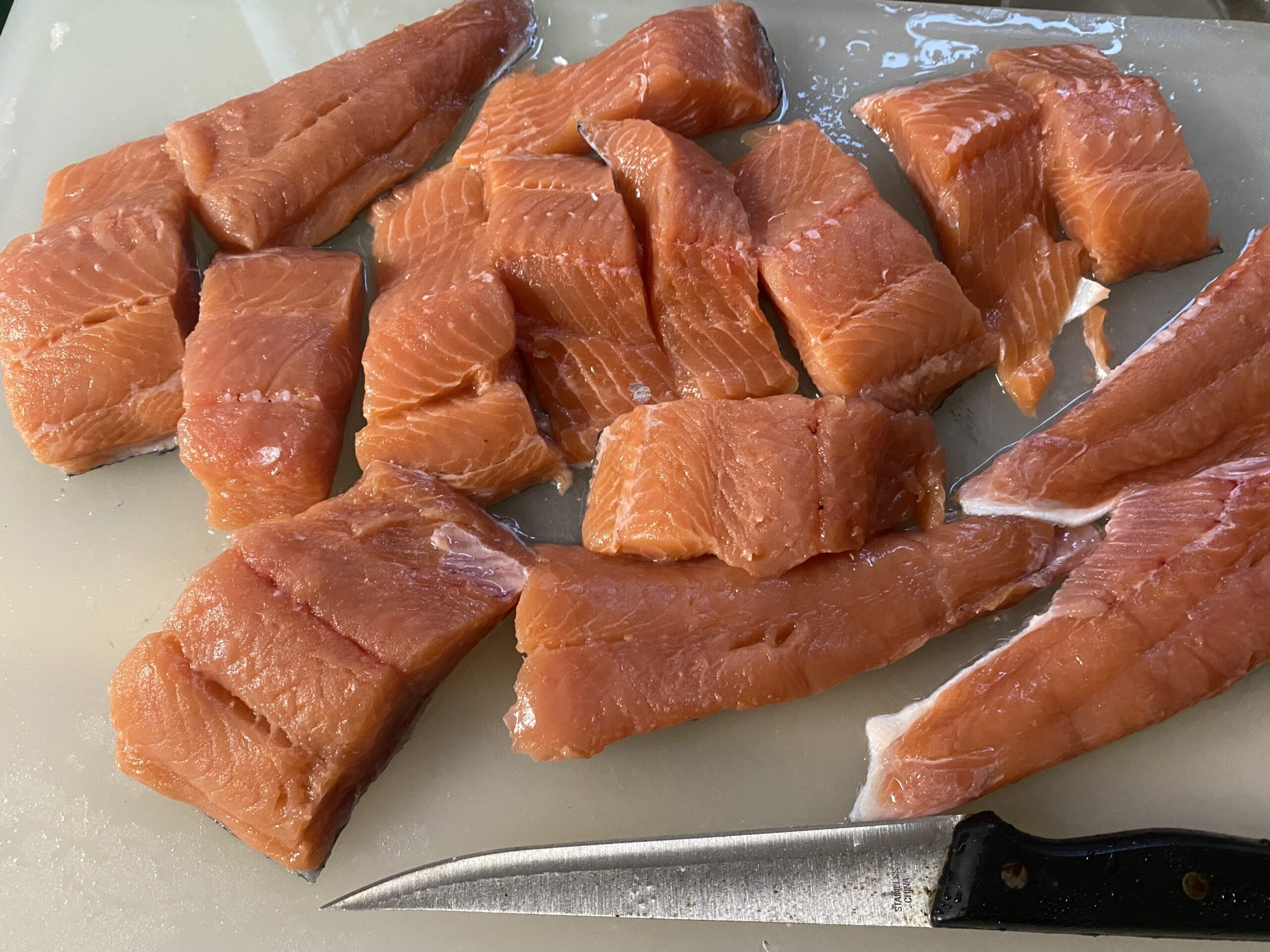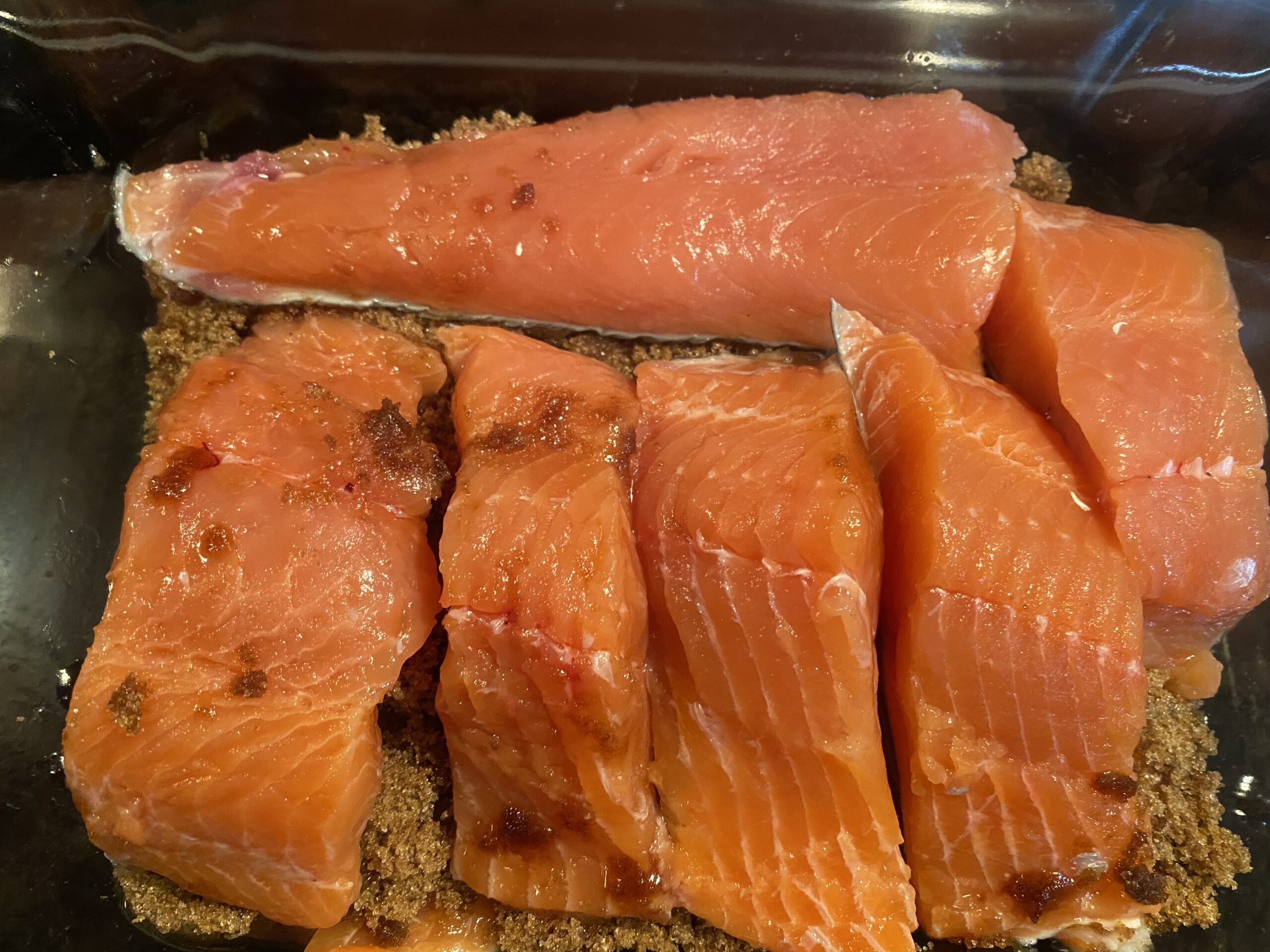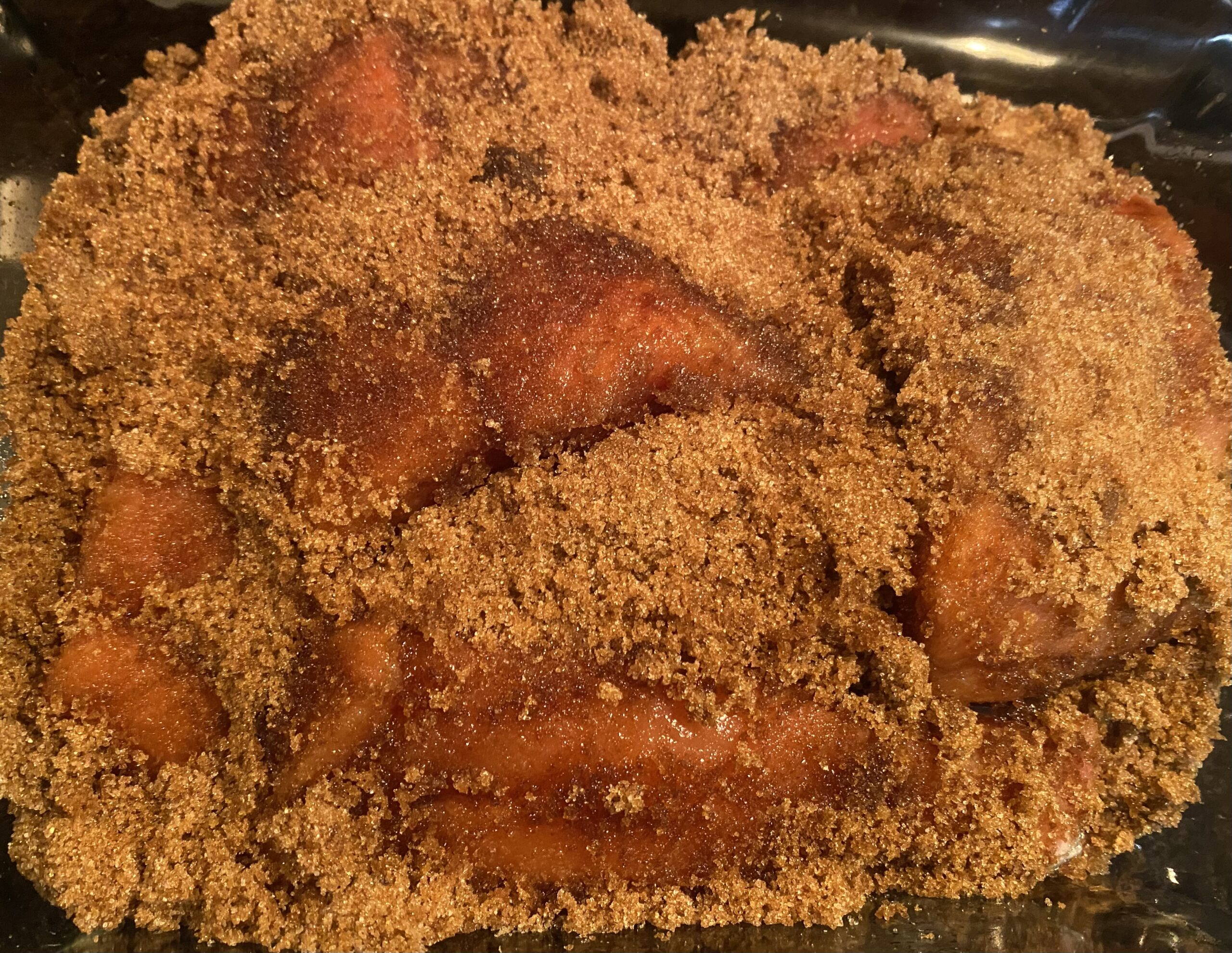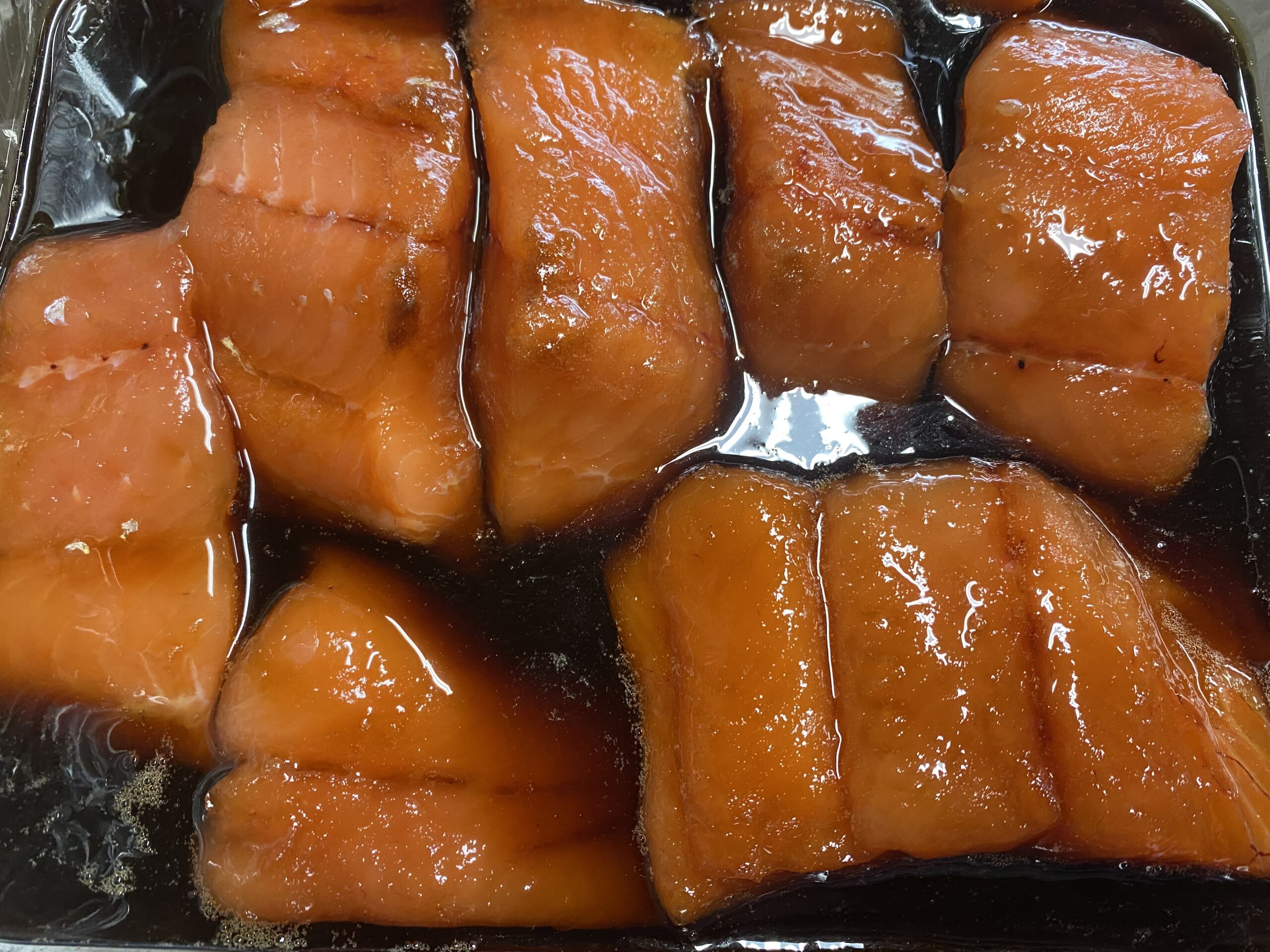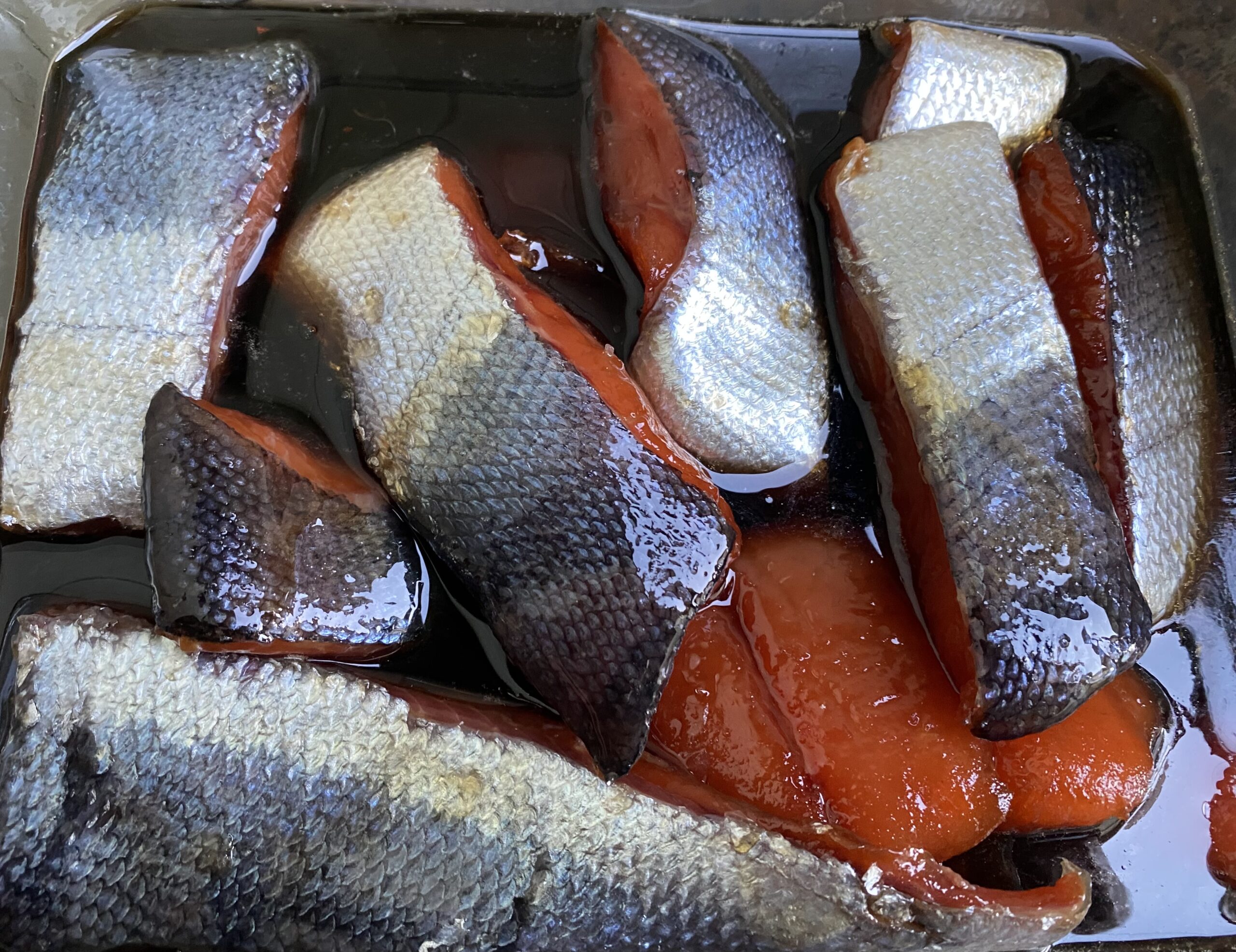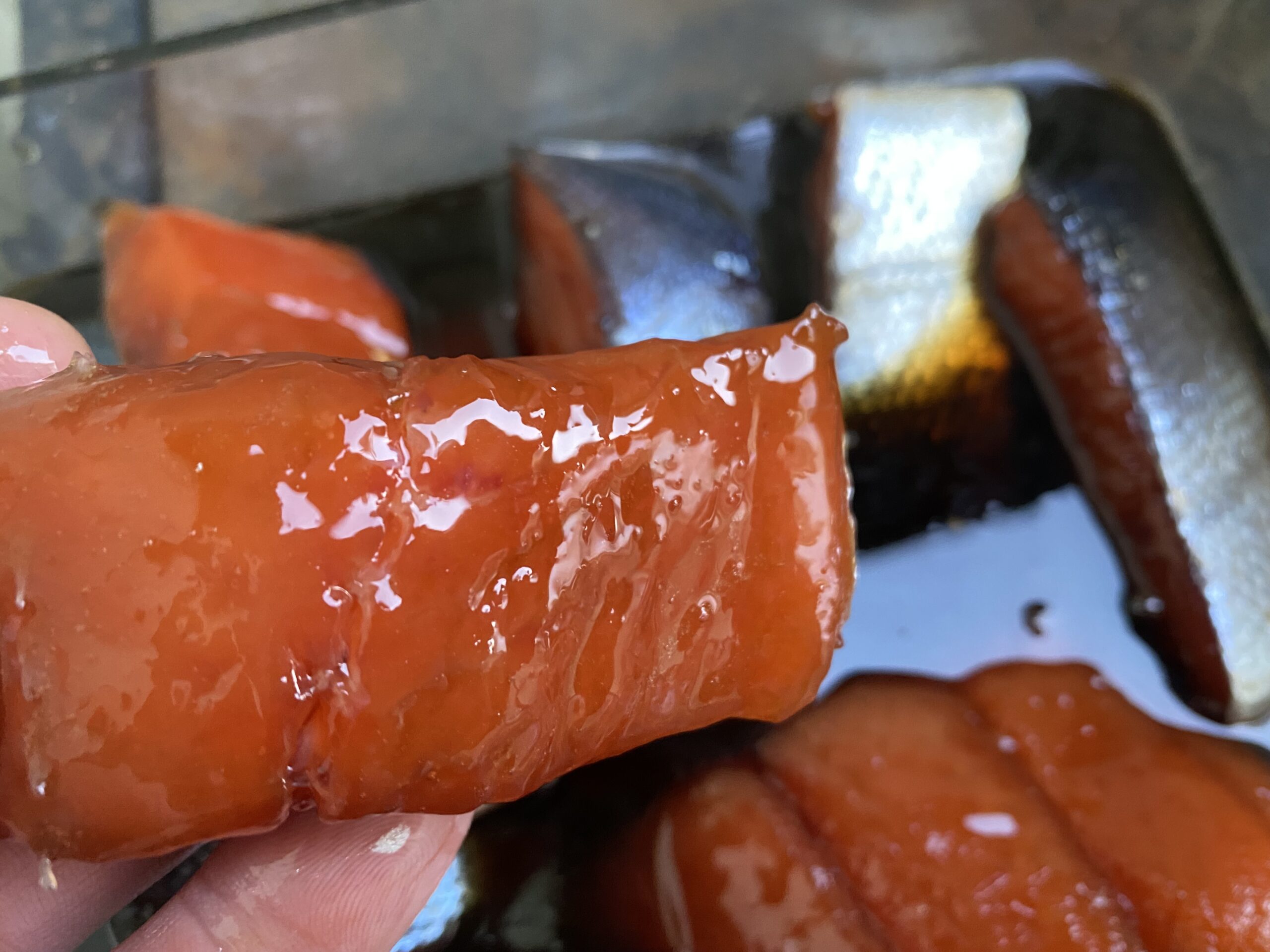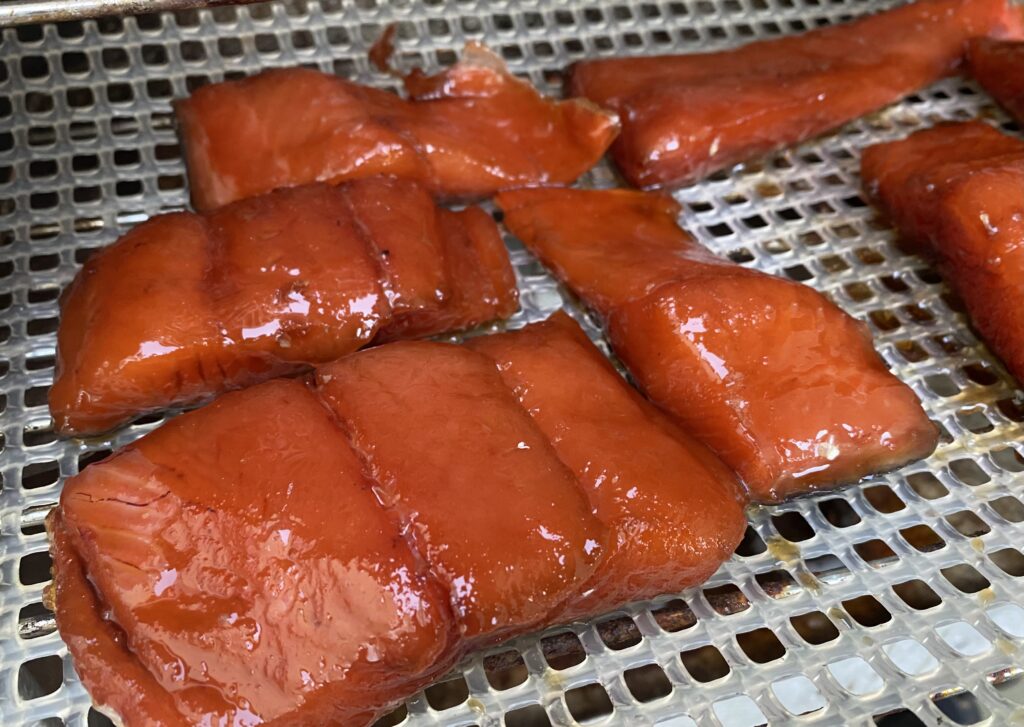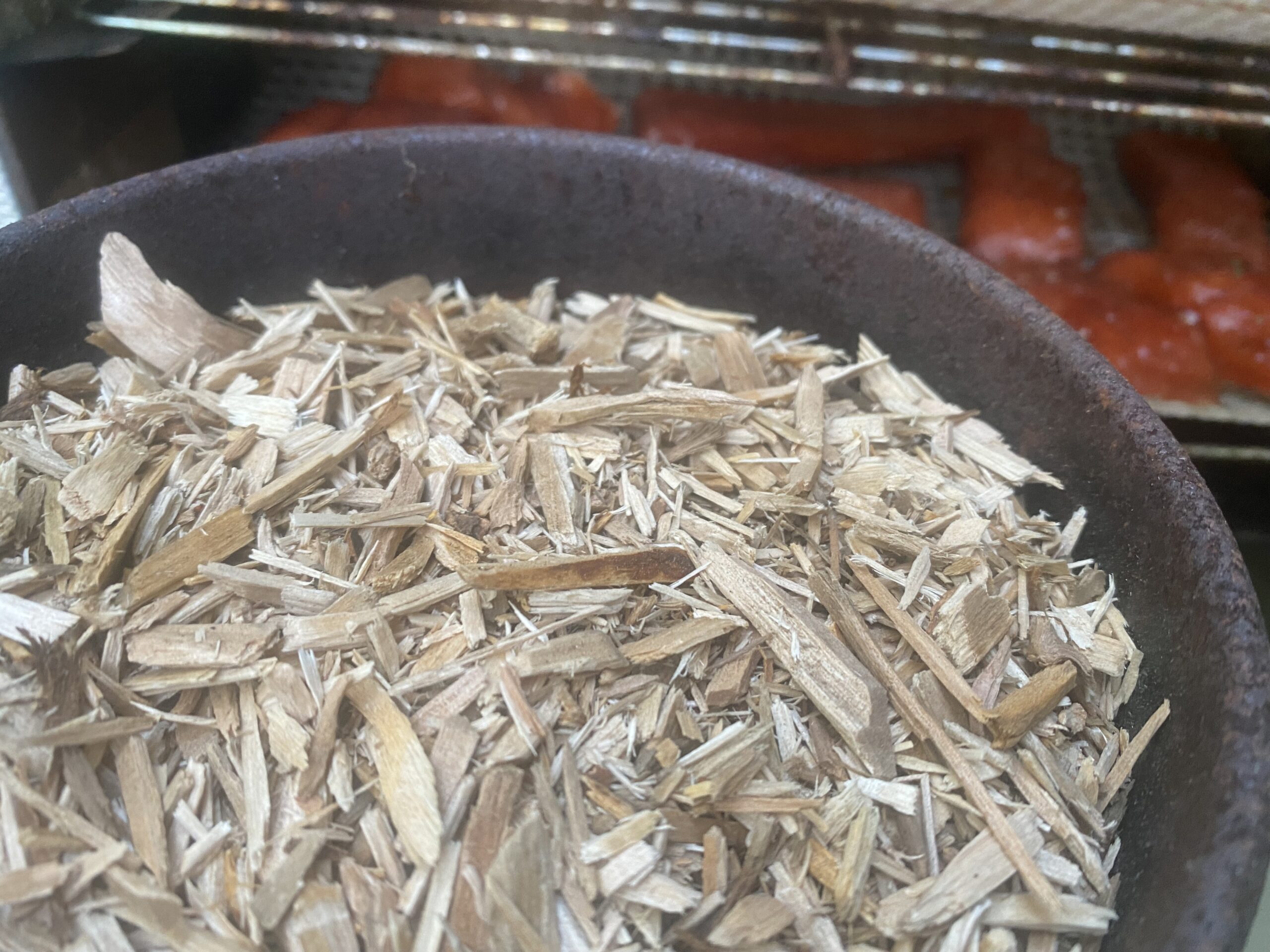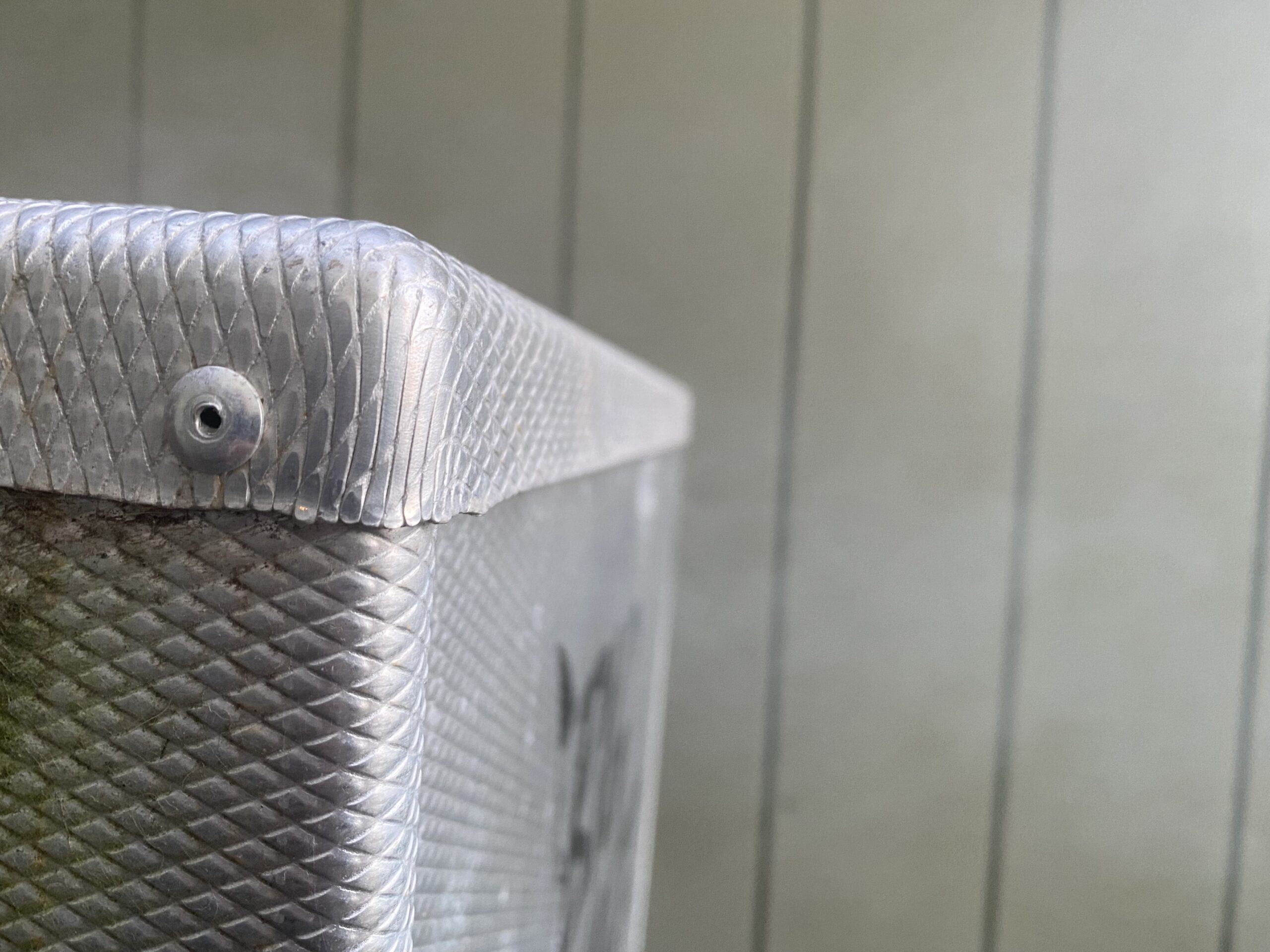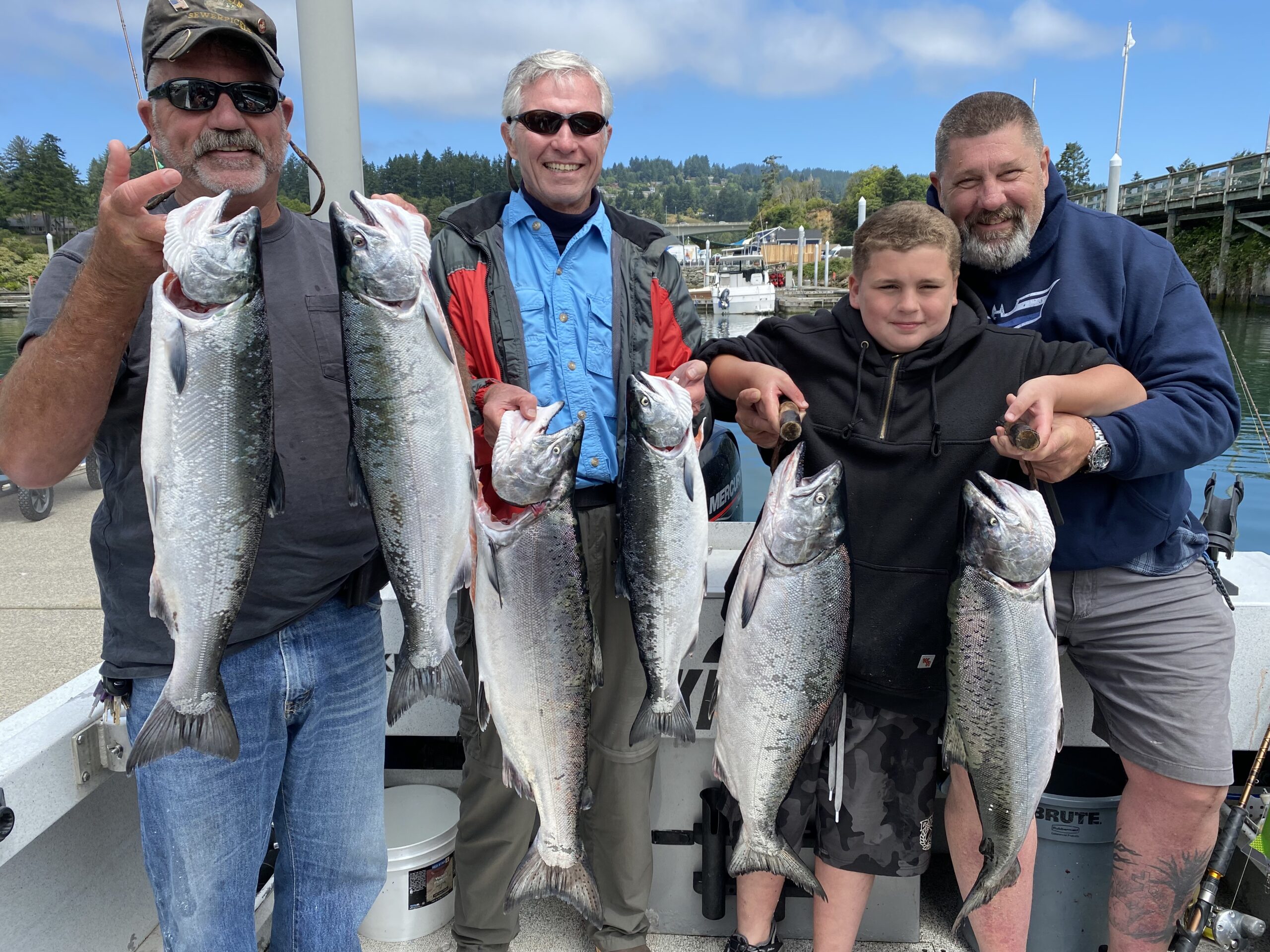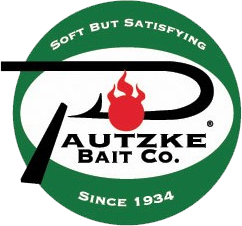BY RICH HOLLAND/Western Outdoor News. BROOKINGS, Ore. – Fires raged both sides of the border, the delta variant was on the move and the wind was blowing a gale along the southern Oregon coast, yet nothing was going stop a group of four anglers from a week of fishing planned six months earlier.
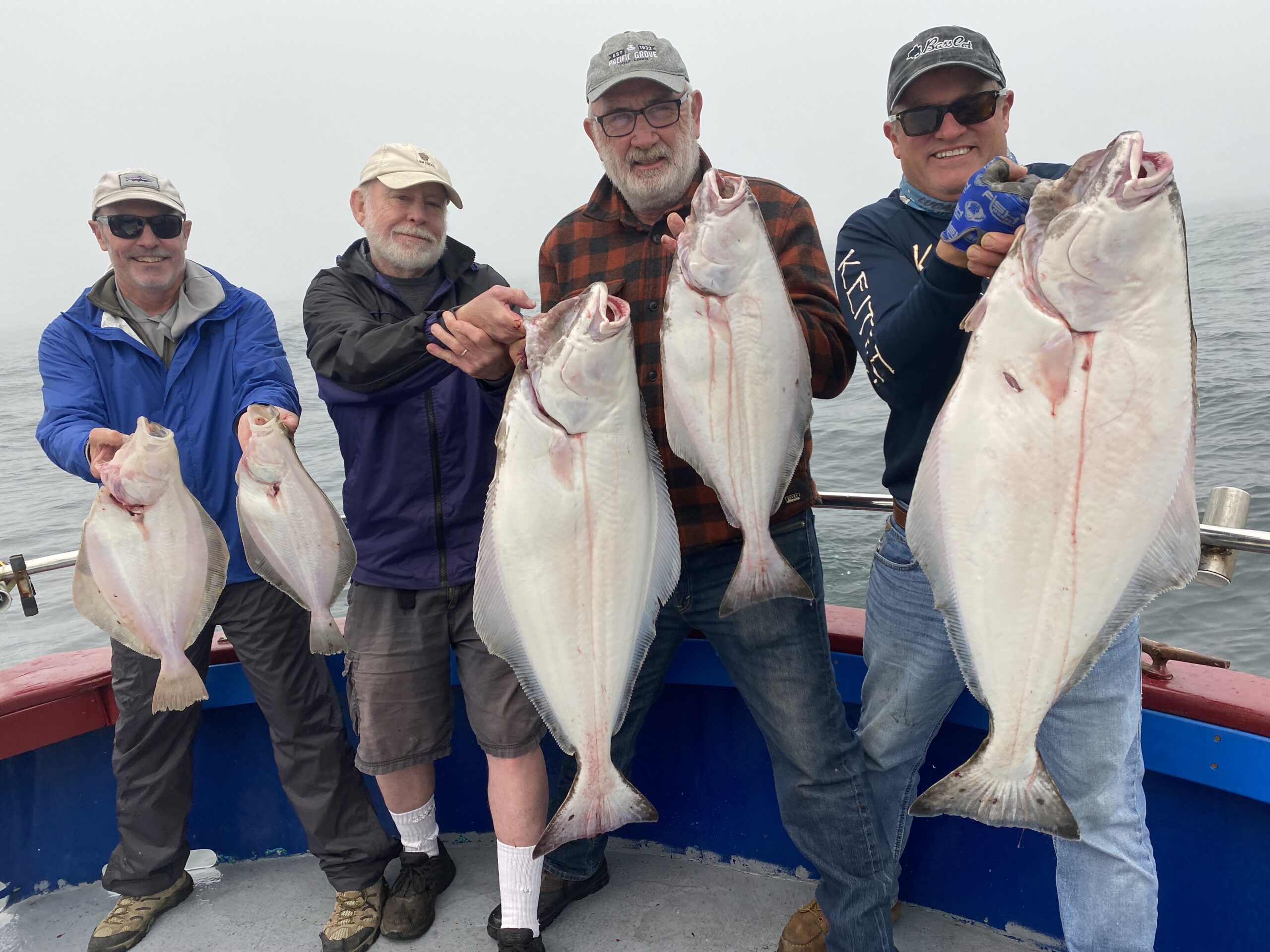
The plan? To use the growing fleet of Andy Martin’s Brookings Fishing Charters to maximize whatever opportunities the waterways and coast from Gold Beach to Crescent City could offer the first week of August. The list of possibilities is long: king salmon, silver salmon, Pacific halibut, California halibut, rockfish, lingcod and albacore.
Martin’s cooperation and flexibility were both necessary and outstanding. It was he who suggested that we book Monday, Wednesday and Friday, leaving as much room for adapting to conditions as possible.
As luck would have it, conditions were excellent when we arrived, dead calm under the protection of Chetco Point. A slight change in the forecast noted that while Cape Blanco to Gold Beach was under a gale warning, the area from Brookings south would be variable 5 to 10 knots with fog and overcast.

“It’s looking good for the Lighthouse tomorrow morning, so make sure you have both your California and Oregon licenses,” said Martin when we called to check in Sunday. “Since we are leaving from and returning to Oregon, we will be under Oregon regulations as far as our catch.”
Brookings Fishing Charters is right across from the launch ramp boat lot and is both office and tackle store. After we paid up, it was a short drive to D Dock where the Miss Brooke, a 29-foot Kingfisher aluminum with twin 150 outboards, was tied up and Andy and Michael McGahan were ready to go at 6 a.m.

“It’s a little windy and bumpy this morning but it is going to lay down all day,” said Martin as he steered for the St. George Reef Lighthouse. As we neared and the spire came into view, as well as islands and basaltic outcroppings, he also told the story of the hundreds who died in a shipwreck just after the Civil War, resulting in the construction of the costliest lighthouse ever built in US waters.
Wind with current meant a quick drift despite the braking of the kicker motor, so even in the shallow water it was hard to feel the bottom. Some heavier heads induced a steady inpouring of beefy black rockfish to come aboard. Then Steve Holland caught the first lingcod of the morning, followed quickly by Paul Freese. Both sported the blueish tint occasionally seen on lings.
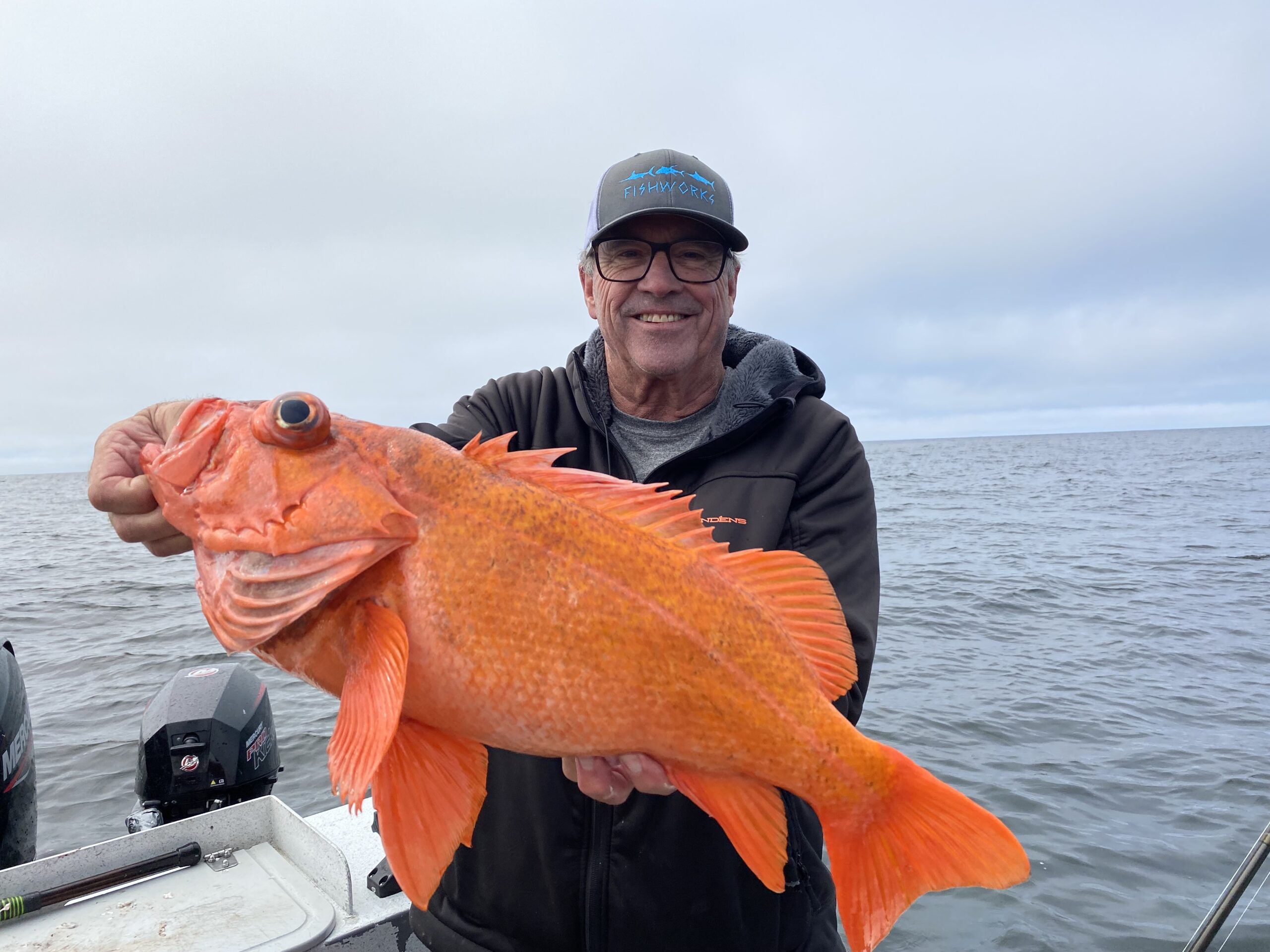
The size of the black rockfish increased as the drift improved with the weather, and canary, yellowtail, copper, china and yelloweye rockfish all found the lures. The last three had to be released under Oregon regulations. The yelloweye were huge and at first gave the impression of being a big lingcod.
Except the big lings gave a much better impression when hooked – besides the ones that fought all the way to the top, a couple almost spooled Steve and Patrick Bird before finding it back to the rocks.
With a slot or two left for some big rockfish, it was time to move the drifts to Martin’s best big lingcod spot for the last of the lings needed for the two fish per person limits. While no monsters were landed Patrick scored the biggest ling of the day when it hitchhiked aboard via a small rockfish, while this writer connected with a beauty of a vermilion rockfish.

“The weather is going to keep getting better every day,” said Martin, “Wednesday could be the best.”
Tuesday was beautiful and with the opportunity to move farther offshore, and while we hiked and golfed, some boats got into both silver and king salmon. Yet the good conditions had Capt. Martin leaning in a different direction for our Wednesday run.
“Our boats that have been trying have been getting at least one good halibut a day up to 50 pounds, even in the rough water,” he noted. “I think we’ll take the big boat out and I bet we can do better than that. We also catch a lot of big petrale sole, and they are great eating.”
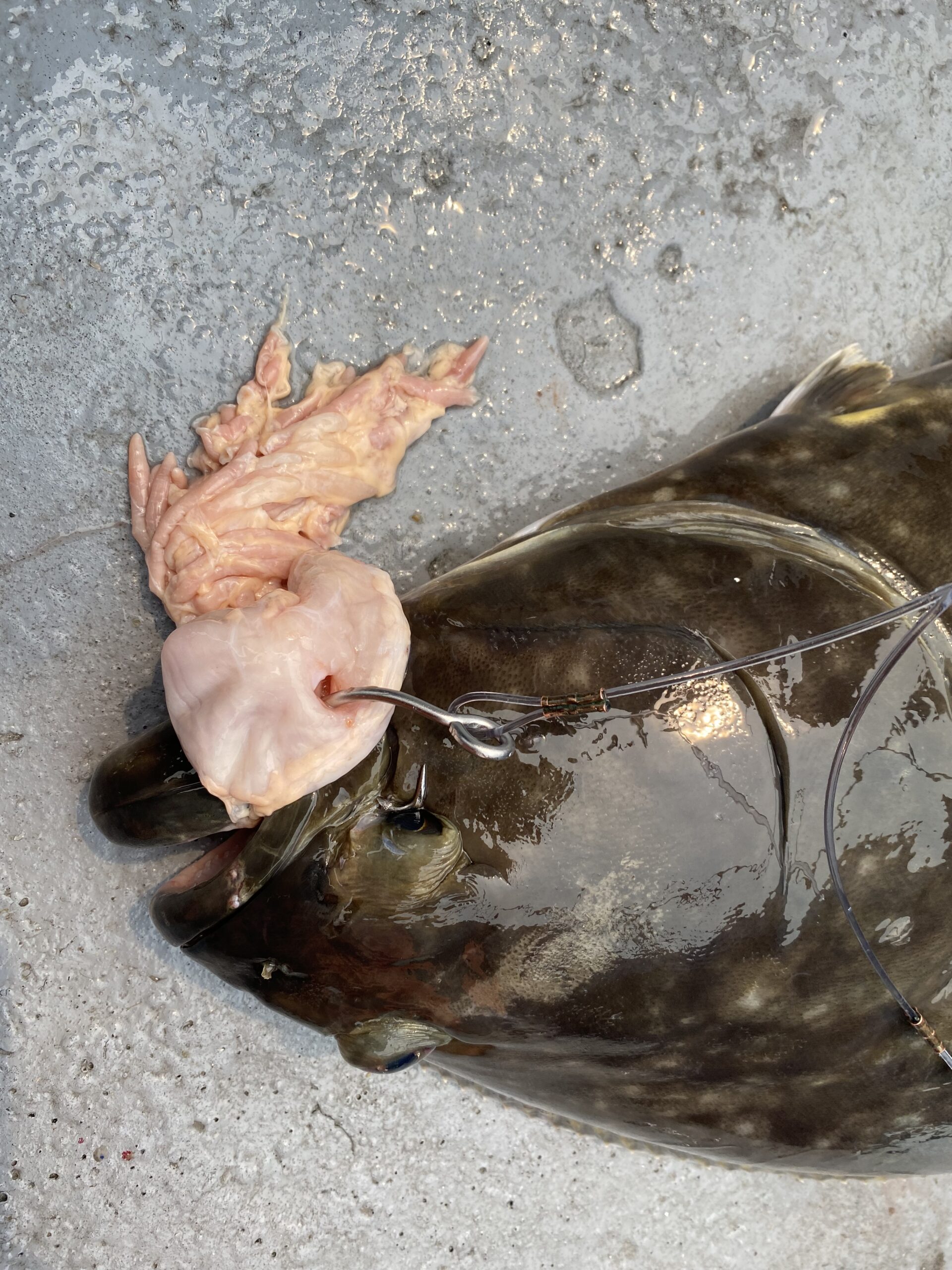
As a result, we were out on the 41-foot Nauti-Lady early Wednesday morning sliding through the smooth windswell and fog out to one of Martin’s favorite spots for Pacific halibut.
“We have to wait for the halibut to pick up our scent and find us,” Martin pointed out as Ron baited double circle hook rigs with squid and herring and Andy set up rods for sand dabs and petrale sole. “Once the sand dabs really start biting, the halibut show up at this spot.”
Brent Foster, who sold his house after surviving the Paradise fire and moved to Brookings, was also aboard and he was the first to hook up with a flattie. Not long after a 24-pound halibut was flopping on the deck.
A long time passed without a bite, then the few that came were light. The sound of nearby humpback whales spouting whooshed through the fog. Every now and then the dense mist would lift and other boats would appear and disappear.
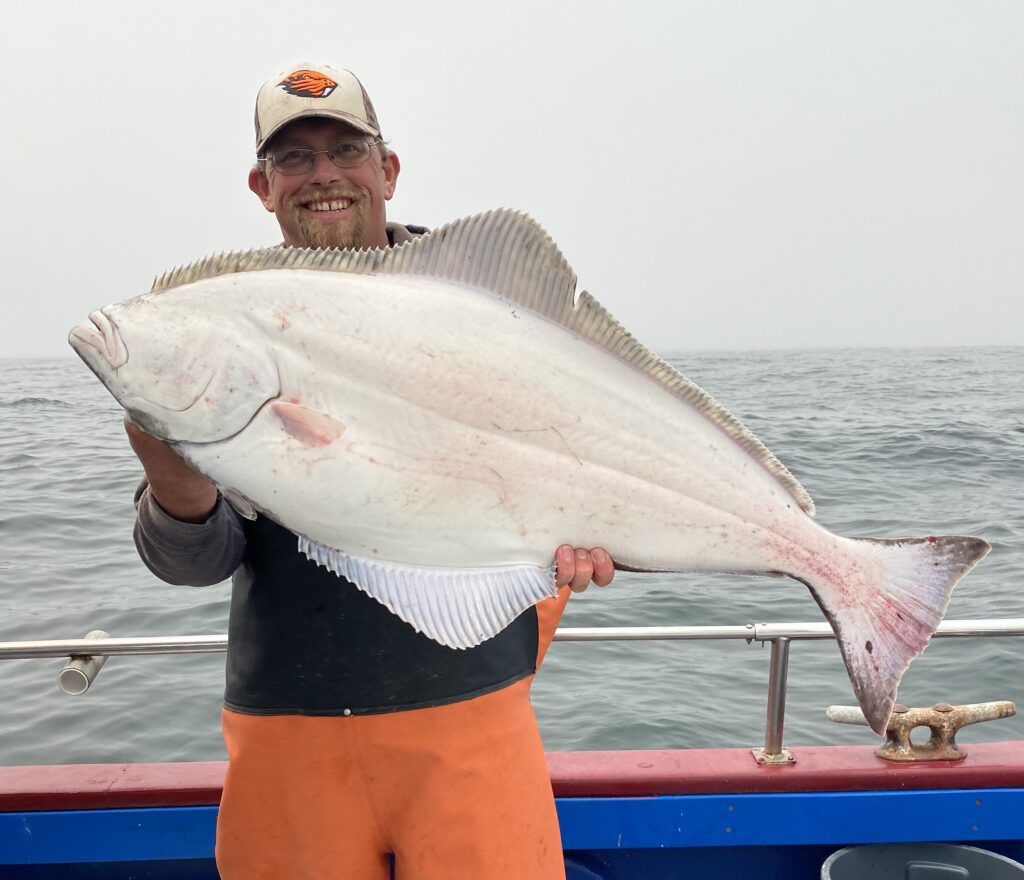
Salmon started to jump around the boat and at times when the fog lifted we would watch a boat net a salmon. Then a call came in from Michael on the Miss Brooke – his group was limited out on king salmon to 35 pounds by 9 a.m.
Believe me, it was getting a little hard to bear!
Andy asked Michael to come by and drop off the salmon guts for bait and we got to see the big king held up by the happy angler. Then when the bait went on the hooks, the halibut started to climb on ours. Patrick broke the ice with a 15 pounder, the Paul landed a 28-pound flattie. We missed a few other bites and decked a handful of big petrale sole to make for plenty of meat to go around.
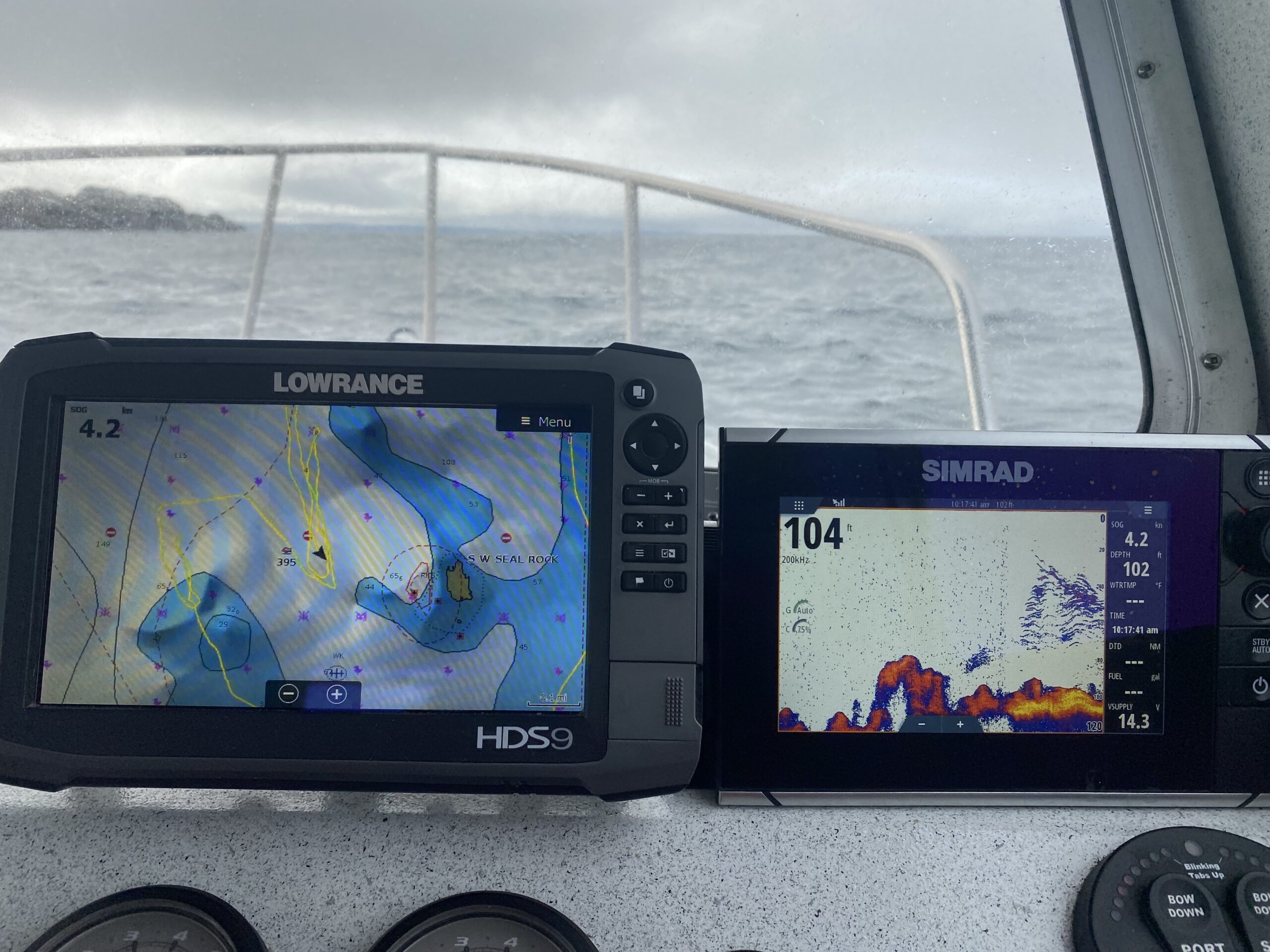
All of the Brookings Fishing Charter boats and most of the other boats out Wednesday had whacked both kings and silvers. It should be noted lots of wild silvers and shaker (short) kings were released.
When Andy asked if we would like to go salmon fishing the next day (Thursday) it was probably one of the quickest times I ever said yes.
We were back out on the Miss Brooke with Michael and Travis at the wheel and on deck Thursday and a breeze was up and the ceiling of grey was well overhead. It was a chunky ride out to the fishing grounds of the day before.
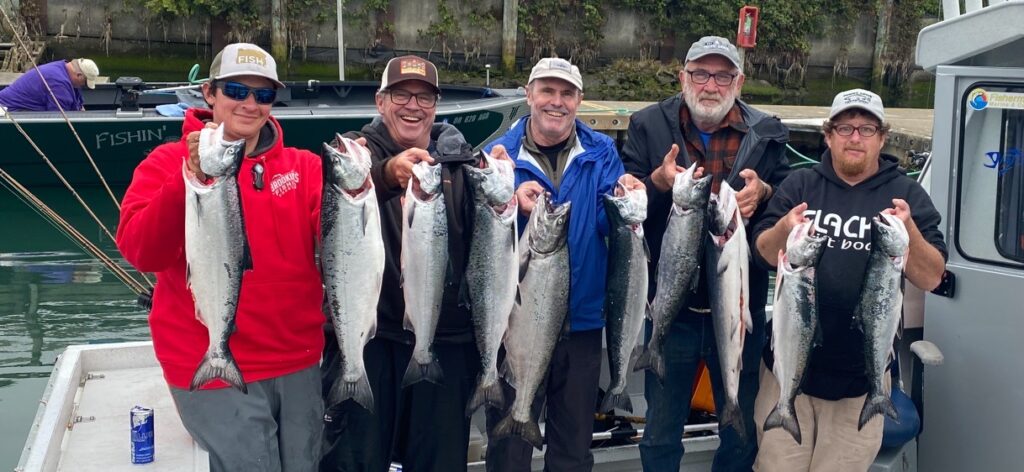
“I’m not marking any bait – the krill was everywhere yesterday – there are hardly any birds and I don’t see any whales, but let’s put the rods out and look around,” Michael said. “Keep an eye out for whales, all of our fish yesterday were on whales.”
Was the day after hex going to take hold?
A handful of bites, two small silvers released and a decent sized hatchery silver boated later, well off the port bow two massive humpbacks twisted back into the water in a massive splash.
“Pull in the gear, we’re going to run for them,” said the skipper. “If we troll to the whales we’ll get there too late.”
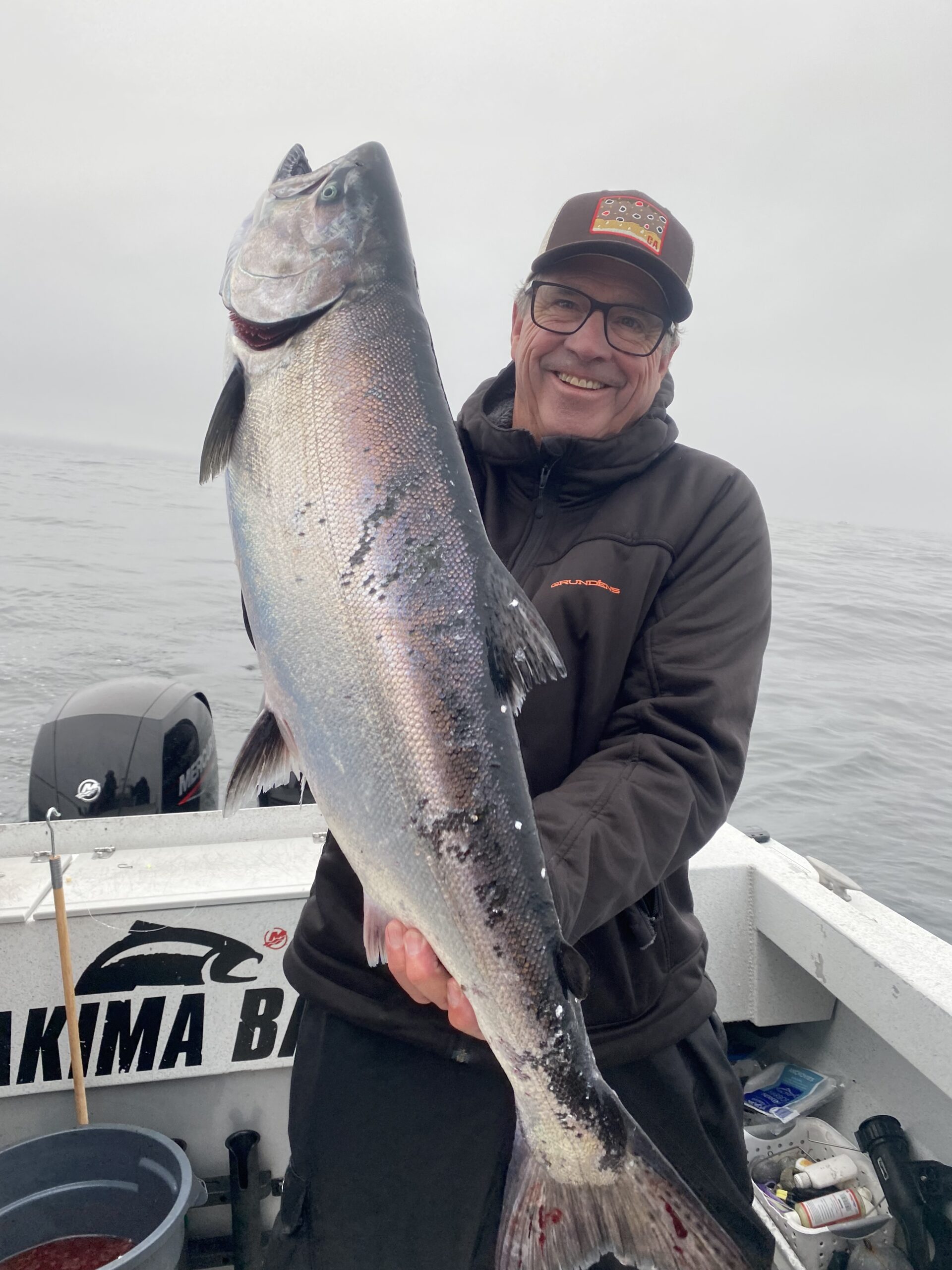
We got there in time all right – so close we could smell the stench of the leviathans’ breath, so close we had to pull back the throttle and steer clear of the big fellas while we put out lures and baits in the slime of their feeding frenzy.
Instantaneous action doesn’t describe what followed, it was a scramble for one bent rod after another, with the inevitable misses and the satisfying runs of a solid hookup intertwined.
At first a lot of the kings were small. Travis dropped the Brad’s Lures fished on divers off the stern to 100 feet back and the keeper kings latched on. For whatever reason the anchovy baits fished tight on the inside at 25 feet also started to pick up more quality.
Whenever the bite slowed at all or the size dropped off, we ran towards the next whale. By 7:55 a.m. we had our 2-fish limits each of kings and silvers, mostly kings. We had dodged the “should have been here yesterday” jinx and done even better.

From the beach the next morning we could see the fog lay heavy. Word was only a rare keeper made it in the box. Later the fog gave way to a mid-afternoon gale. The weather had cleared again as of this writing (Aug. 11) and the boats were into the albacore offshore.
Next time.
For more information on fishing out of Brookings, go to Brookings Fishing Charters at brookingsfishing.com or phone (541) 813-1082.


Trip Info
Location and Recreation
Brookings/Brookings Harbor is located just north of the California border on Hwy. 101. There are many motels and vacation rentals available. We stayed Ocean Suites Motel. Accommodations can also be found to the south in Crescent City. The Chetco River bar is the mouth of Brookings Harbor. The Rogue River in Gold Beach is an hour away and the Smith River in California is 20 minutes south. The spectacular redwoods of Jed Smith State Park line the Smith and Harris Ranch and Lone Ranch State Beaches are just north of Brookings. Salmon Run golf course is on the Chetco and Del Norte golf course is adjacent to the Smith.
Dining
From seafood to steaks, breakfast to burgers and brew pubs, there are lots of options: Alta’s Burger Bar (Smith River), Hiouchi Café (Smith River) Catalyst Seafood, Slug N Stone Ice Cream, Pacific Sushi, Bean and Whistle Coffee Bar, Zola’s Pizza, Wild River Pizza, SuperFly, O’Hollerans Steaks, Mattie’s Pancake House, Chetco Brewing, Misty Mountain Brewing, and Seaquake Brewing (Crescent City). A Fred Meyer has all your shopping needs.
https://wonews.com/halibut-salmon-and-lingcod-brookings-trek-turns-up-trifecta/
